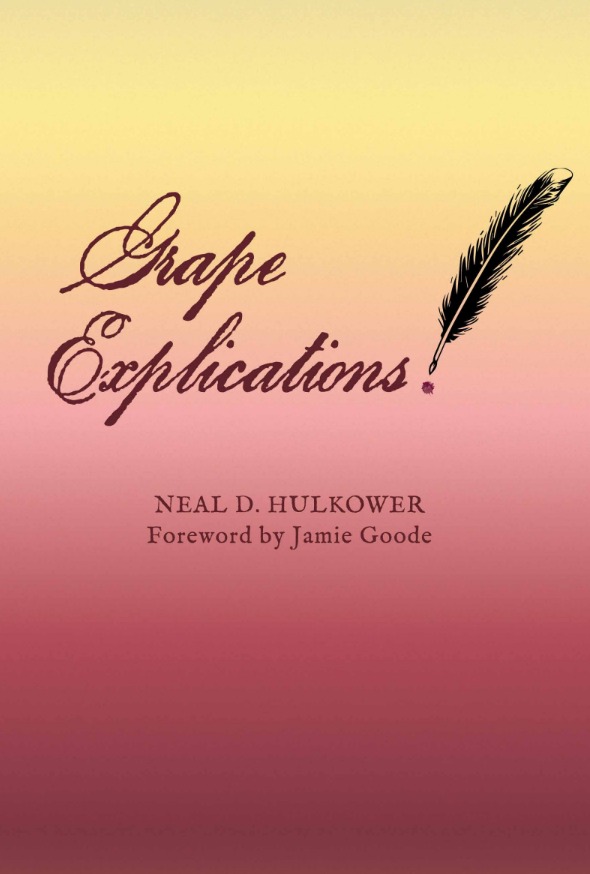
Neal Hulkower, author of Grape Explications, sent me his book to review. It is less a single, neatly packaged volume and more a glorious grab bag of articles, essays and musings. Think of it as a well-stocked cellar of words poured from his writing since the late 1970s.
Neal David Hulkower is a wine writer, reviewer and tasting room professional with decades of experience, all seasoned by an earlier life in academia, aerospace and the boardrooms of technology and operations. Since the late 1960s, he has been everywhere wine has needed him: pouring in Oregon tasting rooms, selling in shops, volunteering at marquee events, and scribbling about it all in journals, magazines and online. His output ranges from tasting notes and book reviews to economic dissections of the wine world, with his byline popping up in the Oregon Wine Press, Journal of Wine Economics, The World of Fine Wine, and beyond. The common thread? A mix of mathematical sharpness and genuine delight in what’s in the glass.
This book doesn’t so much march along a straight road as meander through eight themed parts: book reviews, the quirks of wine economists, and portraits of memorable personalities, to name a few. Jamie Goode nails it in the Foreword when he says Neal writes for the reader, not for the egos of people or wineries being featured.
Early on, the vintage tasting notes whisk us back to Neal’s first encounters with fine wine, capturing the thrill of discovery in careful sensory detail.
Then there’s the Borda point scoring system. It sounds dry, but Neal makes it fizz with life. A voting method dressed up as wine judging, it evens the playing field by giving every taster the same weight. No more one cranky judge wrecking the curve, Borda blends everyone’s rankings into a consensus that feels fair and democratic.
As an applied mathematician, Neal can’t resist poking holes in the numbers wine people cling to. He gleefully dismantles the Davis 20-point scale, skewers the tyranny of 100-point scores and shows why vintage charts are about as useful as yesterday’s weather report. His essays mix serious critique with a wink, turning what could be dry analysis into something refreshing and cheeky.
In the section Grape Explications, he admits he no longer keeps elaborate notes:
“Generally, I no longer keep detailed notes since formulating and recording them tends to distract me when I’m tasting. Enjoying wine, for me, is a wholly right-brained activity while writing exercises the other hemisphere.”
It’s hard not to nod along, I have been there, caught between savouring and scribbling.
The book reviews sparkle with his curiosity. His take on Eric Asimov’s How to Love Wine: A Memoir and Manifesto cheers Asimov’s plea to strip away intimidation and let wine be fun again. With Jamie Goode’s I Taste Red: The Science of Tasting Wine, Neal relishes the way science and sensory pleasure collide, giving us a bridge between neurons and nose.
Towards the end, Neal muses about spitting, equal parts etiquette lesson and comic relief, before puzzling over what we really mean when we call a wine ‘elegant’. And in one of the book’s more eyebrow-raising pieces, In Defense of Describing Wines as Masculine, Feminine, and Sexy, he looks into the linguistic thicket with boldness, arguing that these descriptors still have a place if handled thoughtfully and with respect.
In the end, Grape Explications is like sharing a long, winding tasting with a witty friend who knows his stuff but never takes himself too seriously. It’s smart without being stiff, playful without being flippant and full of both love for wine and gentle mischief. Readers will come away entertained, enlightened, and maybe even inspired to taste, and think, a little differently.
You can learn more and buy the book on Neal’s publisher web site.













